Innovative Technologies and Applications of Artificial Intelligence
Date and place: 25 April 2025, Akademia WSEI, Lublin, Polska
🌐 Conference website: https://nx365.ai/warsztaty/
🎥 Conference recordings are available on YouTube:

On April 25, 2025, the second edition of scientific workshops under the slogan “Technologies of the future: Development and application of artificial intelligence” took place at the WSEI Academy in Lublin. The event gathered a large group of experts, scientists and industry representatives, becoming a platform for exchanging knowledge on the latest research trends, case studies and practical implementations of solutions based on artificial intelligence.
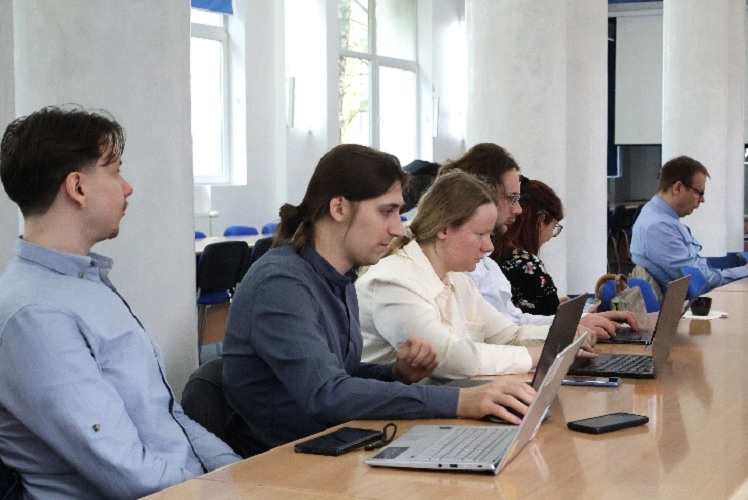
The conference focused on the presentation of innovative AI technologies and their versatile applications in various areas of life and economy.

The first introductory lecture, titled “Technologies of the future – development and application of artificial intelligence”, was delivered by Prof. Tomasz Rymarczyk.

The speaker presented a broad vision of the evolution of future technologies, with particular emphasis on the role of artificial intelligence and its fundamental impact on industry and economy. He discussed the history of AI development, starting from its theoretical foundations, through key achievements such as AlphaGo, Watson or AlphaFold, to the dynamic development of advanced generative models and large-scale language systems (e.g. GPT, BERT, LaMDA, Gemini, Llama).
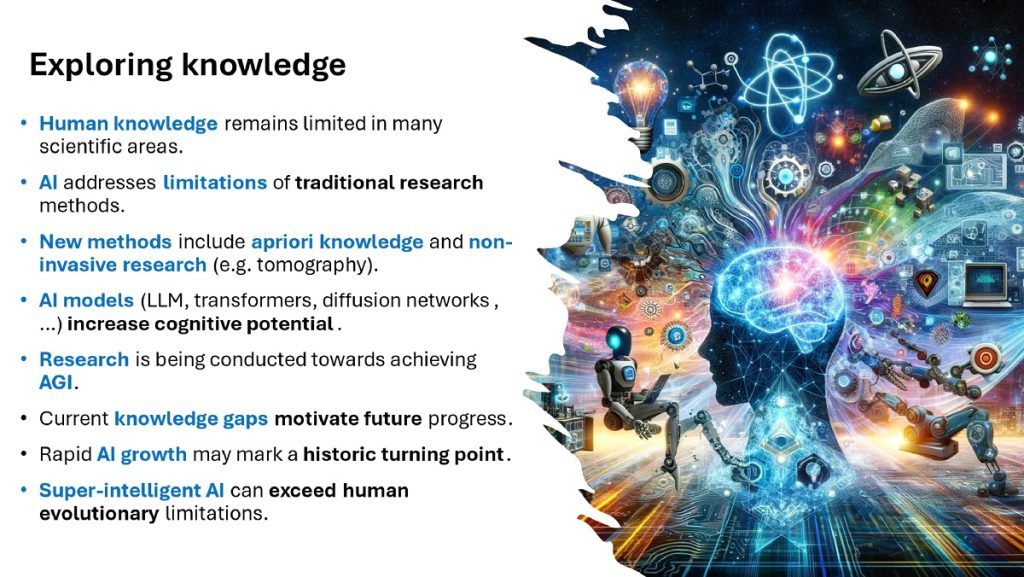
The author presented potential directions for further development of AI, including the concept of personal AI assistants, the increasing automation in various professional sectors, and the profound social transformations resulting from the integration of AI in everyday life. He also pointed out the enormous opportunities offered by AI technologies, while emphasizing significant ethical, social, and security challenges that require a responsible approach and further interdisciplinary research.

Then, dr. Dariusz Wójcik in his technological lecture “Generative artificial intelligence: from variational autoencoders to latent diffusion models” introduced the audience to the evolution of generative artificial intelligence methods.

He started with a discussion of classical autoencoders and their variational equivalents (VAEs), moving on to GANs, VQ-VAEs, PixelCNNs, and the latest developments in the form of latent diffusion models (LDMs) and systems such as DALL E. The speaker detailed the historical development of dimensionality reduction techniques, the concept of internal representations, and unsupervised training methods. He delved into the workings of diffusion models, including their ability to reconstruct high-resolution images and generate visual content from text descriptions.

The author also presented his own implementations and outlined open research questions regarding the integration of different architectures in future generative systems, with particular emphasis on the fundamental importance of latent representation (discussing, among others, PCA, VAE, KL divergence, VQ-VAE, CLIP, DM, LDM) and the possibilities of models such as GPT-4o.

The third thematic lecture, “Algorithms and techniques of reinforcement learning in production line control – a case study”, was presented by dr. Grzegorz Rybak. The lecture focused on the practical application of reinforcement learning algorithms to control the digital twin of a production line.
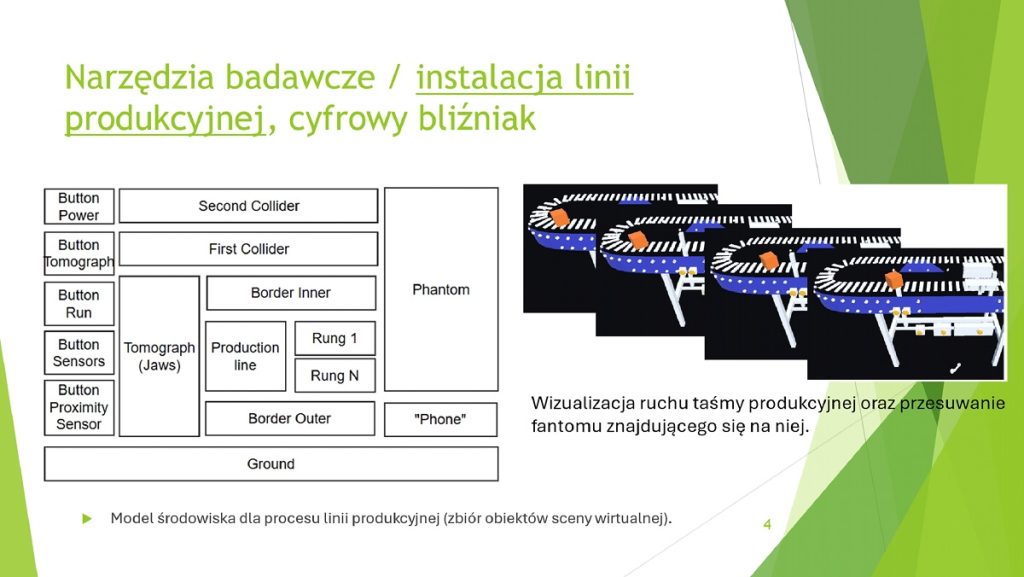
The speaker discussed the implementation of a simulation environment using the Unity engine and the Hyleidos model, in which the AI agent learned to optimally control the speed of the production line using the Q-learning algorithm and the epsilon-greedy strategy. Particular attention was paid to the analysis of learned control policies and the impact of the reward and penalty system on the agent’s efficiency.

The key elements of RL (agent, environment, state, action, reward, policy, value function, Markov decision process – MDP) and Python code fragments illustrating the update of Q-table and policy are presented. The research results indicate the possibility of significant improvement of the efficiency of industrial processes by using machine learning methods in realistic simulation conditions.
Session 1: S1. Innovative technologies

Konrad Niderla in his presentation “Does the agent know what we want? Reward function for the crystallization process in reinforcement learning” raised the issue of defining the reward function in RL using the example of controlling the crystallization process using process tomography.

He discussed a model of a simulation environment where the goal of the agent was to optimize the process parameters in order to obtain crystals with the desired properties.
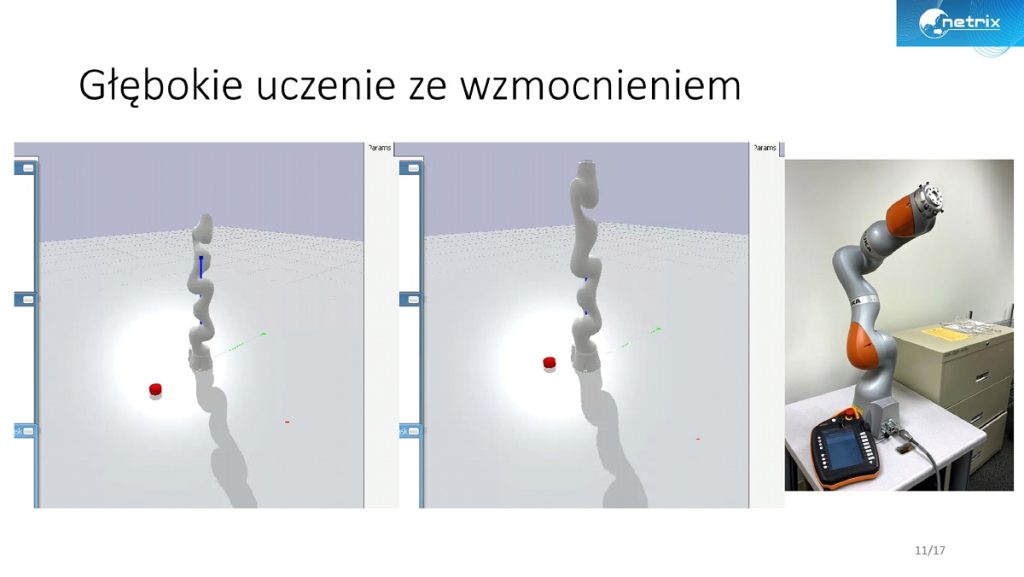
He highlighted the challenges of ambiguity and delayed feedback that make it difficult to train the agent effectively, and the crucial importance of a correct definition of the reward function to achieve stable results.
In his presentation “Exploring the potential of the digital twin in optimizing production processes,” Lukasz Ciuraj introduced the concept of the digital twin as a tool for optimizing production line parameters. He presented the architecture of the system (including the simulator, RL module and user interface), mechanisms for managing production speed to minimize vibration and maintain optimal working conditions.

He highlighted the different levels of digital twin advancement (Digital Model, Shadow, Twin) and its classification (Component, Product, Process, System Twin). He presented the design of a digital twin prototype of a production environment (iot-data-simulator, rl-service, digital-twin-backend, digital-twin-frontend), emphasizing the importance of integrating simulations, sensory data and AI algorithms for Industry 4.0 solutions.
Marcin Dziadosz discussed “Application of Machine Learning Algorithms in Measurement-Reconstruction Analysis of the Urinary Bladder Using Electrical Impedance Tomography.” The presentation focused on the application of various machine learning models (including Elastic Net, ANN and CNN neural networks, LSTM and GRU recurrent networks, as well as decision tree algorithms, XGBoost and Extremely Randomized Trees) to the analysis of EIT data.
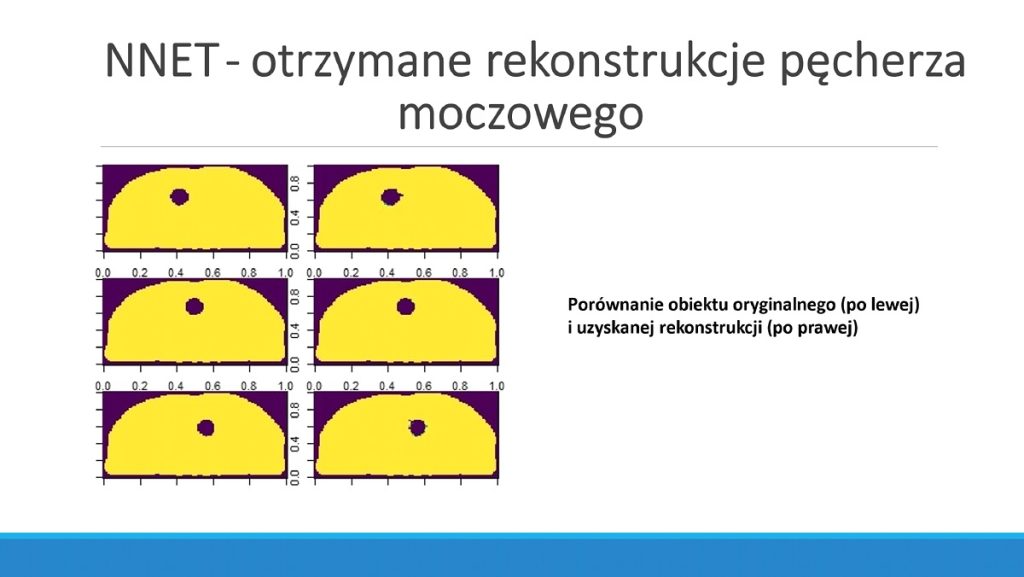
He presented their use in solving direct and inverse problems in the context of urinary bladder imaging, indicating the possibility of obtaining high-quality reconstructions supporting medical diagnostics.
Michal Oleszek in his presentation “Efficient Power Management in IoT Systems” presented practical approaches to optimizing power consumption in Internet of Things devices using Bluetooth Low Energy (BLE) technology.

He conducted an analysis of the impact of parameters such as transmitting power and transmission frequency on the operating time of battery-powered devices (CR2032). He discussed the implementation of a system based on the nRF52 processor with humidity and temperature measurement and the role of RTOS systems (sleep modes, tickless idle). The test results showed the possibility of significantly extending the life of devices through appropriate configuration of operating modes (e.g. long advertising intervals, non-connectable advertising, System OFF mode, dynamic change of Tx power) and communication parameters.
Tomasz Łobodiuk presented “The use of FPGAs in modern measurement systems”. He discussed the advantages and limitations of using programmable logic gate arrays (FPGAs) in the design of measurement systems.
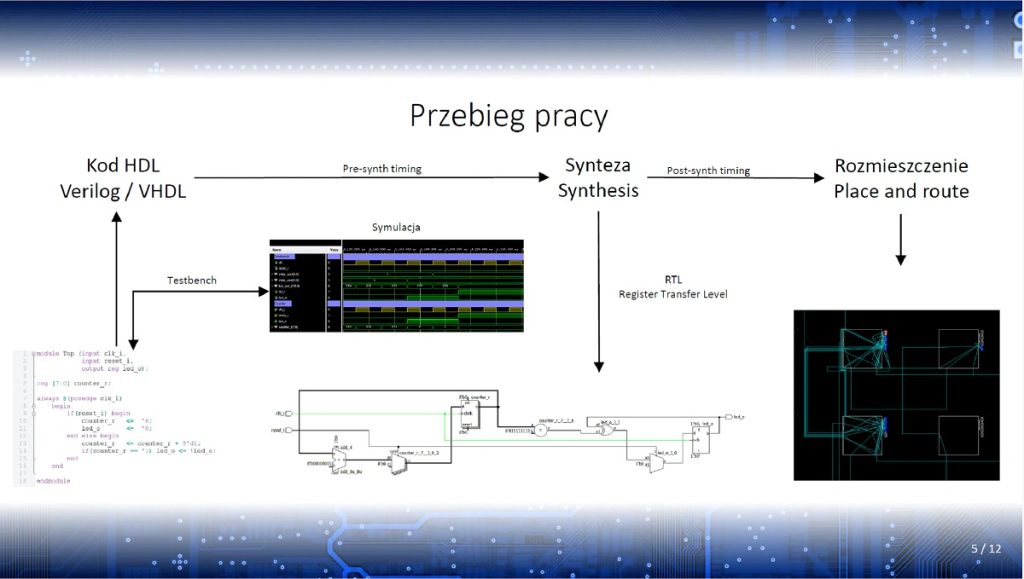
He presented the design process, from coding in Hardware Description Languages (HDL), through synthesis and implementation, to simulation. He compared the capabilities of FPGA with classical processors, pointing out deterministic time control and hardware flexibility, but also the challenges related to the time consumption of development. He presented the internal structure of FPGA (I/O banks, RAM blocks, LUT, FF, PLL) and examples of implementation of counters and measurement systems.
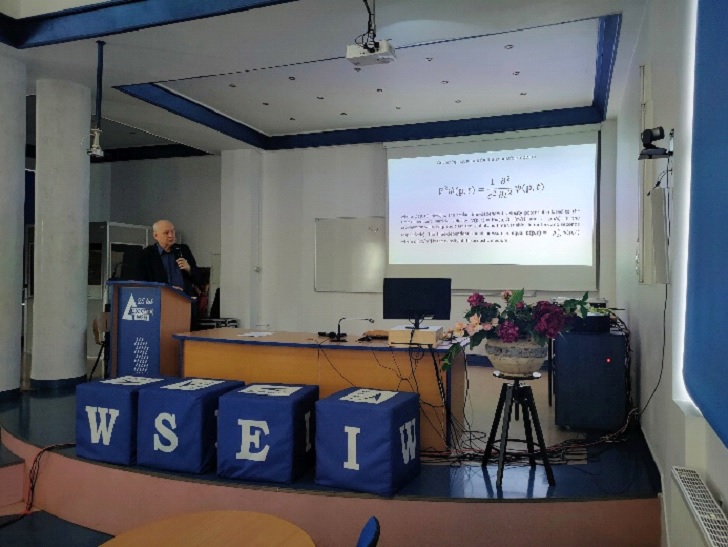
He presented the design process, from coding in Hardware Description Languages (HDL), through synthesis and implementation, to simulation. He compared the capabilities of FPGA with classical processors, pointing out deterministic time control and hardware flexibility, but also the challenges related to the time consumption of development. He presented the internal structure of FPGA (I/O banks, RAM blocks, LUT, FF, PLL) and examples of implementation of counters and measurement systems.

He discussed mathematical models, including the Helmholtz equation and various boundary conditions (Neumann and Dirichlet). He presented analytical and numerical approaches, including the boundary element method (BEM), and compared them with analytical solutions (e.g. for a plane wave and a cylindrical scatterer in the Rayleigh regime using the Jacobi-Anger expansion).

He presented the results of experiments with simulations of imaging objects with complex shapes using near-field data and deterministic and genetic optimization methods in solving inverse problems.

Next, Dr. Grzegorz Klosowski, in a thematic lecture titled “Application of machine learning in electrical process tomography with multi-frequency measurement sequences,” discussed a novel method for process imaging in industrial reactors. The method uses machine learning and multi-frequency measurement data.
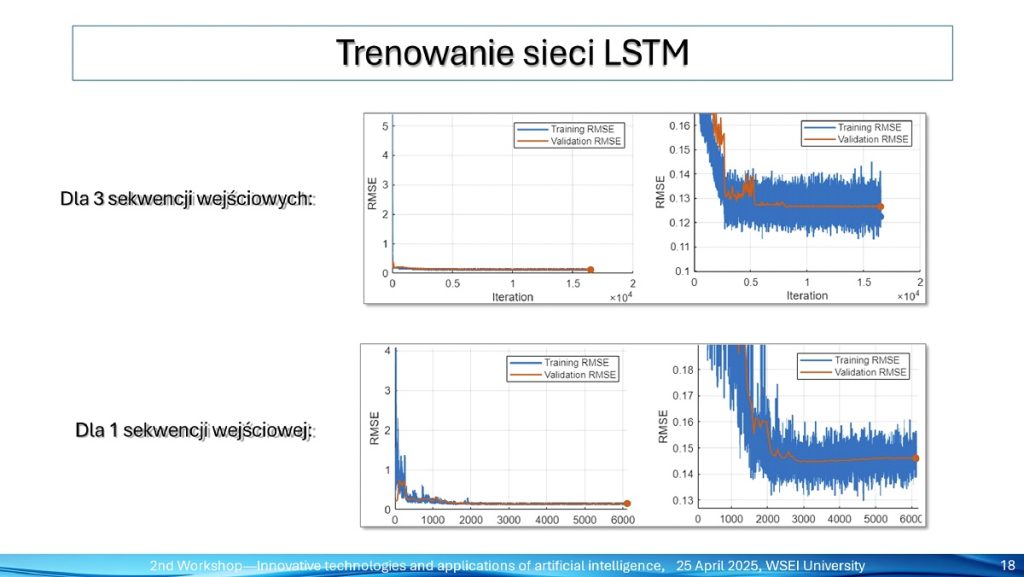
He presented the architecture of the model based on LSTM networks and the method of using complex impedance values to improve the quality of image reconstruction. He also discussed the application of the Cole-Cole model to represent the dielectric properties of materials. He compared the single-frequency model (purely resistive measurements) with the multi-frequency model, indicating that the multi-frequency approach allows for better identification of changes in the internal structure of reactors, especially in the presence of noise.
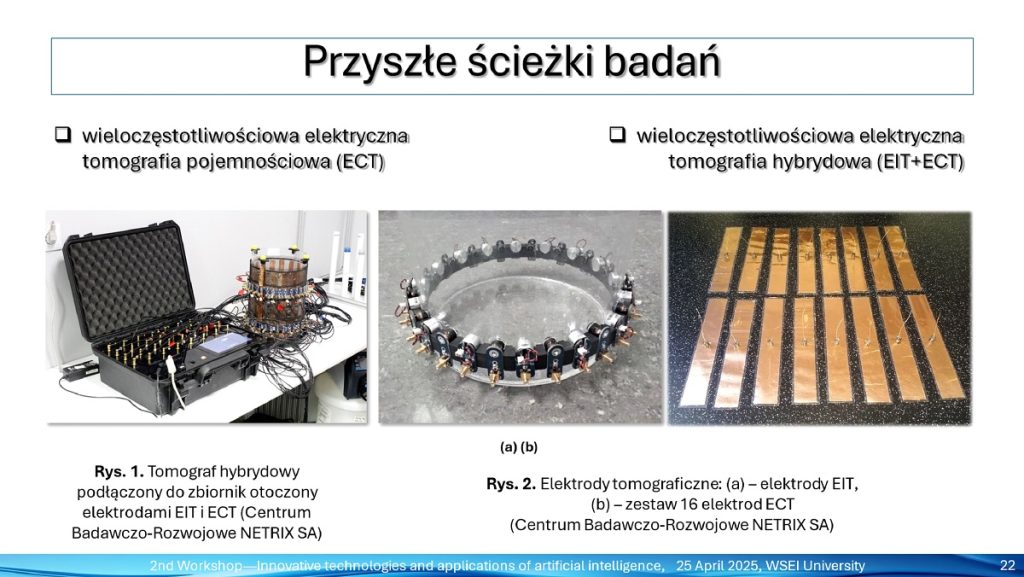
He also pointed out future research directions, such as multi-frequency capacitance tomography (ECT) and hybrid (EIT+ECT).
Session 2: S2. Algorithms, sensors and tomographic systems
Michał Maj presented “Image analysis methods in radio tomography reconstruction: location, contour and estimation of the person’s perimeter”. The paper discussed methods of analysis of images obtained from 2D radio tomography using tSVD techniques and Tikhonov regularization. The procedures of segmentation (binarization, connected components), contour detection and estimation of the perimeter of people located in the measurement field were presented.
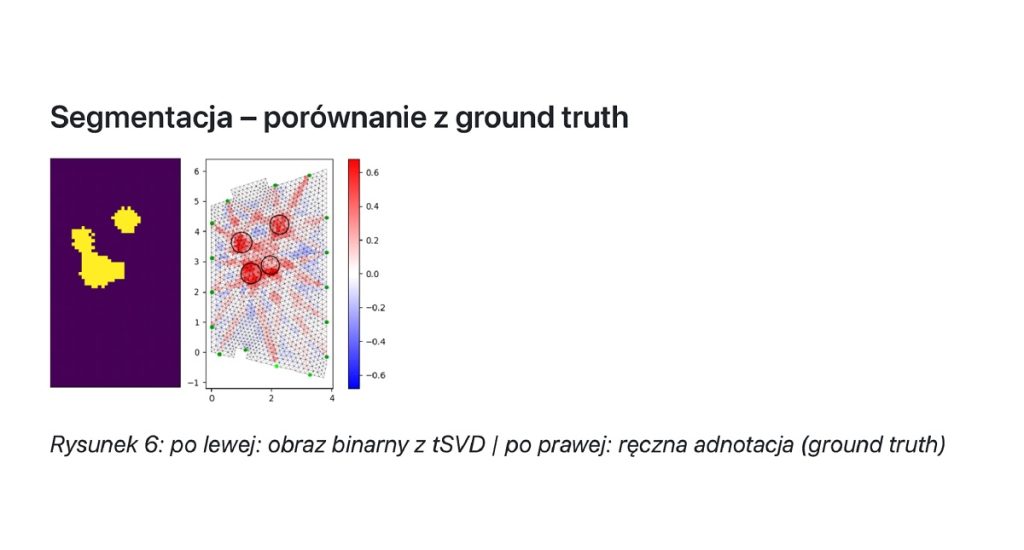
The comparison results showed the superiority of the tSVD method in terms of geometric reconstruction quality and contour stability. Validation was performed using an RGB camera, YOLOv7 person detection and a homographic transformation.

Barbara Stefaniak’s talk “Data classification using encoder decoder networks with conv2D” addressed the application of conditional variational autoencoders (CVAE) and hybrid neural networks with a transformer component to classify impedance tomography (EIT) images.
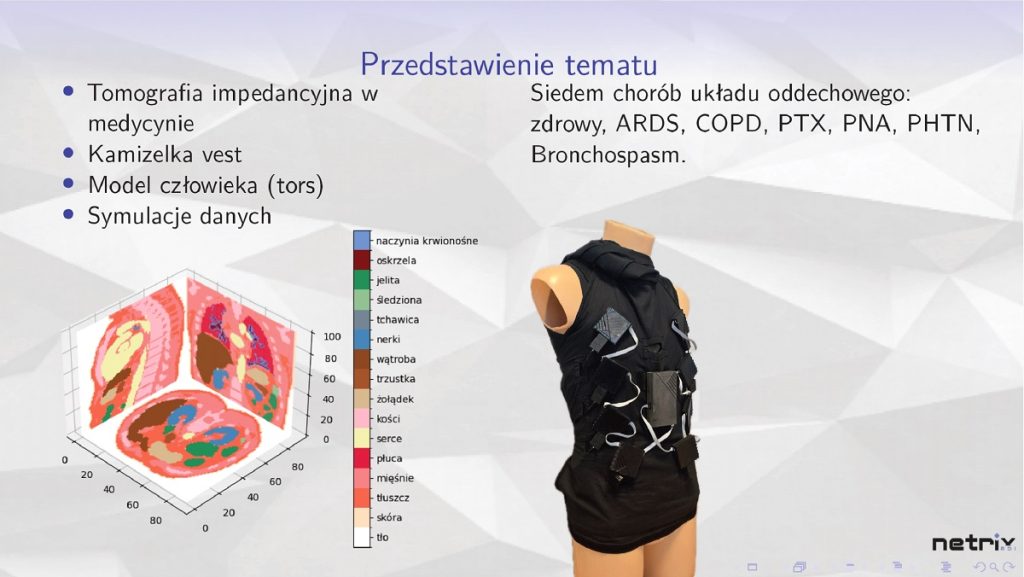
The research focused on recognizing respiratory diseases based on simulated EIT data from a human torso model. She presented a CVAE architecture (with Conv2D layers, batch normalization, LeakyReLU and transposed Conv2D) and a hybrid classifier (modified ResNet50 + transformer with attention mechanism).

The results obtained on the basis of simulated data and plans for further development of the model, including enriching it with additional data sources (e.g. heart activity signals), were discussed.
Michal Styla, in his presentation “Implementation of ultra-wideband technology and temporal distance determination methods in proprietary transceiver systems for indoor navigation,” discussed the implementation of a proprietary indoor navigation system.
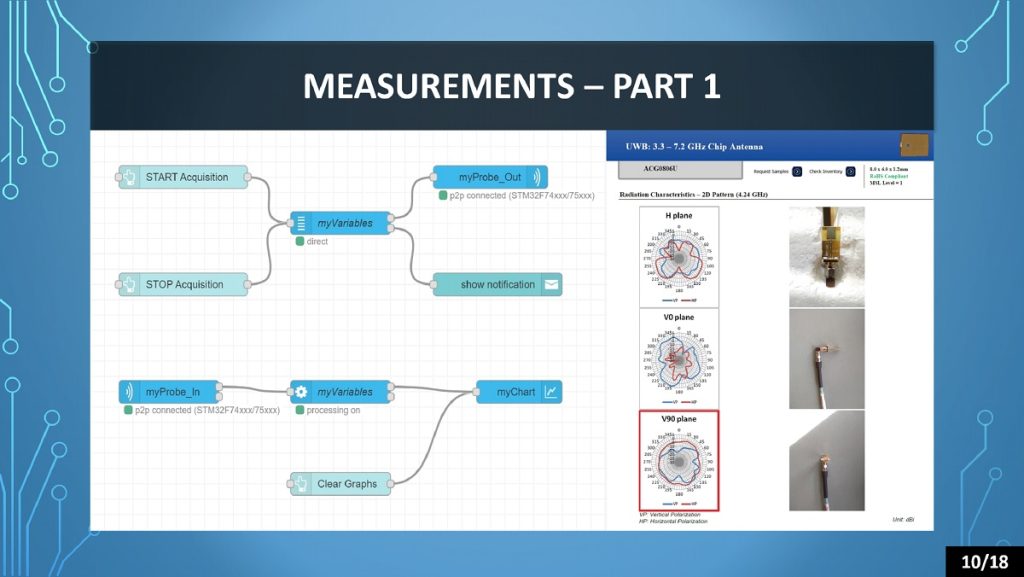
This system is based on ultra-wideband (UWB) technology and Time of Flight (ToF) signal measurement methods, in particular the SDS-TWR technique. The modules available on the market were compared with our own solutions in terms of cost, reliability and flexibility. The results of distance measurements before and after calibration, the applied localization algorithms and the use of the Kalman filter for data smoothing were discussed. The potential of the developed technology in applications such as warehouses, intelligent buildings and security systems was indicated.
Dominik Gnas presented the concept of the device in his paper “Electrical Impedance Spectroscopic Tomography for Blood Glucose Monitoring.” The device uses electric impedance spectroscopic tomography (EIT-S, AD5933YRSZ chip) and an optical sensor (MAX30102) for non-invasive monitoring of blood glucose levels.
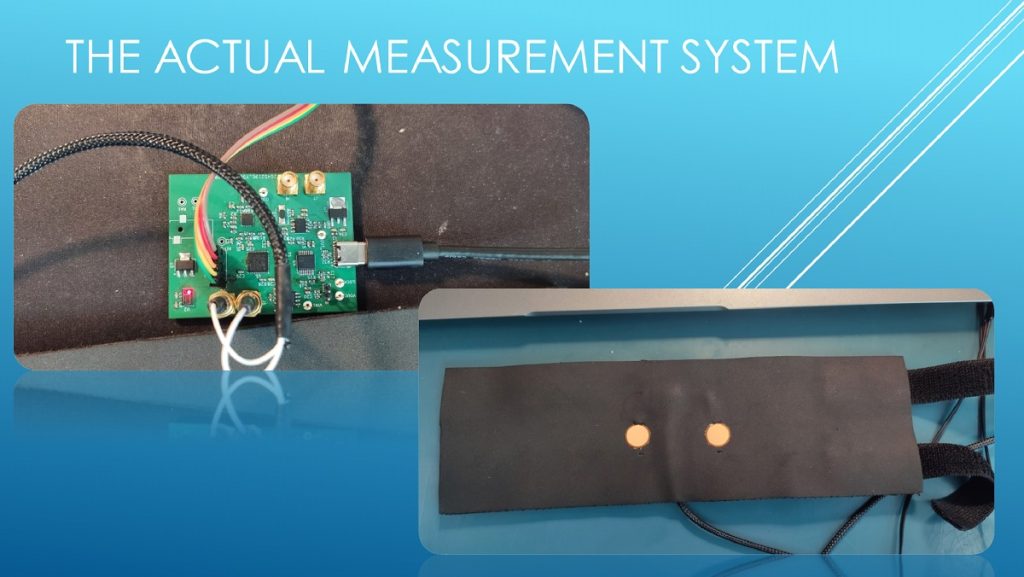
The electronic system design (STM32F411 microcontroller), schematics, PCB design, calibration plan and experimental assumptions were presented, including impedance and optical parameter measurements during various metabolic states. The presentation showed the potential of the developed technology towards medical diagnostic applications.

The last thematic lecture was presented by Dr. Tomasz Cieplak on the topic “The importance of ontologies and knowledge bases in increasing the quality of technical documentation created by LLM models based on multimedia content”. The speech presented a system supporting the generation and validation of technical documentation based on instructional videos, using a domain ontology.

The architecture of a system that analyzes transcripts and images from videos, enriching them with metadata and improving terminological quality and semantic consistency through integration with a knowledge base is discussed. Typical quality problems of documentation generated by LLM (inconsistency, confabulation) and limitations of standard prompt engineering are highlighted. An ontology is proposed as a formal knowledge model.
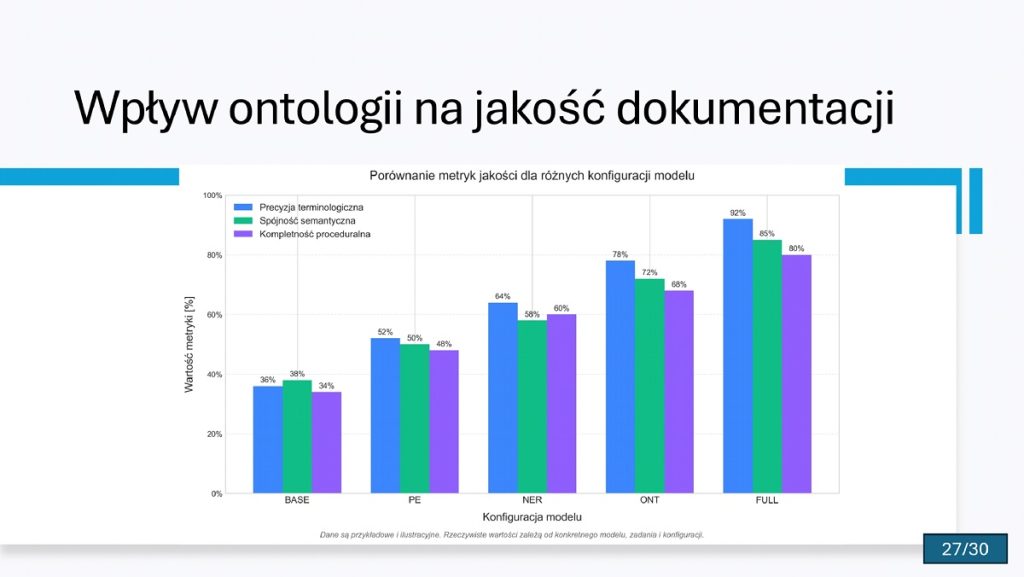
A case study is presented, showing how the use of the system (entity extraction, semantic validation) affects the precision of procedure descriptions and the correctness of terminology.
Session 3: S3. Applications of AI
Dr. Mariusz Mazurek discussed “Application of machine learning methods in mobile sensors using electrical impedance tomography”. The presentation concerned the development of a non-invasive system for monitoring functional urinary tract disorders in children, combining EIT, EMG and Ultrasound Tomography (UST).

The construction of a mobile sensor (with 16 textile electrodes) that enables measurement and reconstruction of the image of the urinary bladder was presented. The use of various machine learning algorithms (LARS, NNET, Elastic Net, decision trees) was discussed, which significantly improve the quality of imaging (NNET gave the smallest error). The project has passed certification of compliance with medical standards and has the potential to be implemented both in medical facilities and at home.
Krzysztof Król presented the “System for analysis and monitoring of process production parameters”. It was a comprehensive system for monitoring parameters of production and logistics processes, intended for manufacturing companies, biogas plants and power plants.

System wykorzystuje inteligentne sensory BLE do pomiaru temperatury, wilgotności, ciśnienia i wstrząsów.
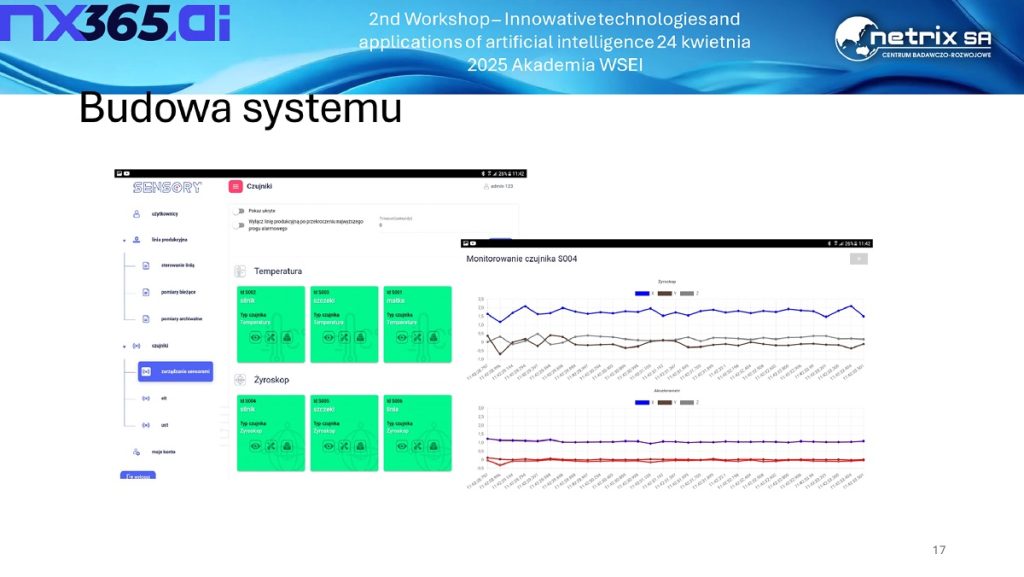
The system architecture (IoT Edge data collection layer, LoRa/Zigbee transmission, IoT integration, client applications), production line model with various sensors and decision mechanisms (e.g. decision tree), as well as the operation of a web application enabling data visualization and process quality analysis were presented. The system was successfully tested in a production environment.
Marek Wójcik presented “AI in the security of IT networks” and showed the role of artificial intelligence in ensuring cybersecurity. He discussed the detection of threats such as malware, phishing, DDoS attacks and ransomware. He focused on the applications of AI in the analysis of anomalies, profiling the behavior of users and devices (User and Entity Behavior Analytics – UEBA) and the automation of responses to security incidents. Particular attention was paid to the use of NLP to analyze e-mails for phishing and to techniques for recognizing automated network traffic.
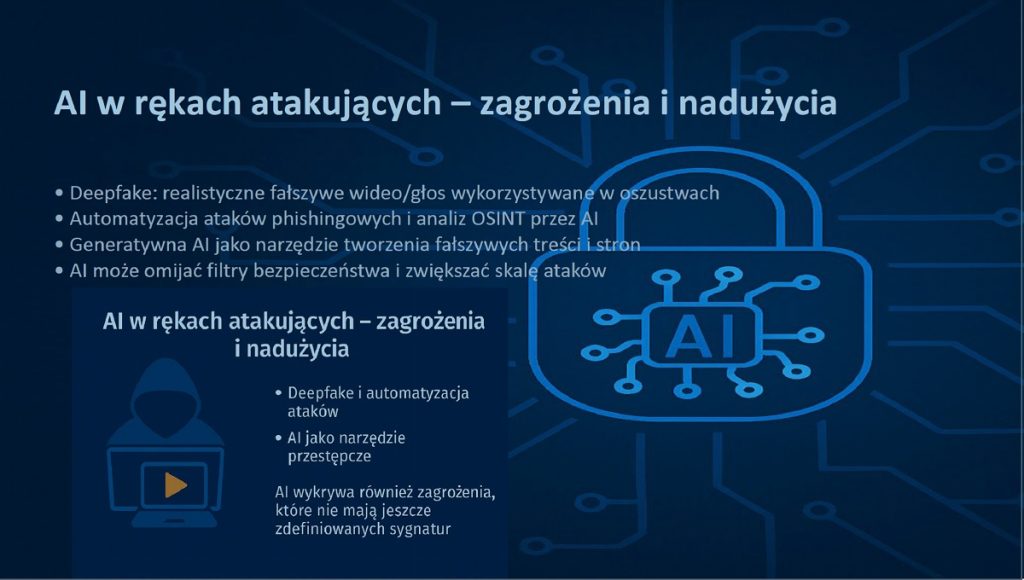
Tools such as Darktrace, Vectra AI and Microsoft Defender were presented, also pointing out the challenges related to the transparency of AI decisions (Explainability) and the threats resulting from the use of AI by cybercriminals.
Paweł Kaleta discussed “The use of cloud computing at the Lublin WSEI Academy”. The presentation concerned the implementation of a private cloud computing at the WSEI Academy. Basic concepts related to the cloud, its types (public, private, hybrid) and practical applications in the academic environment were discussed.
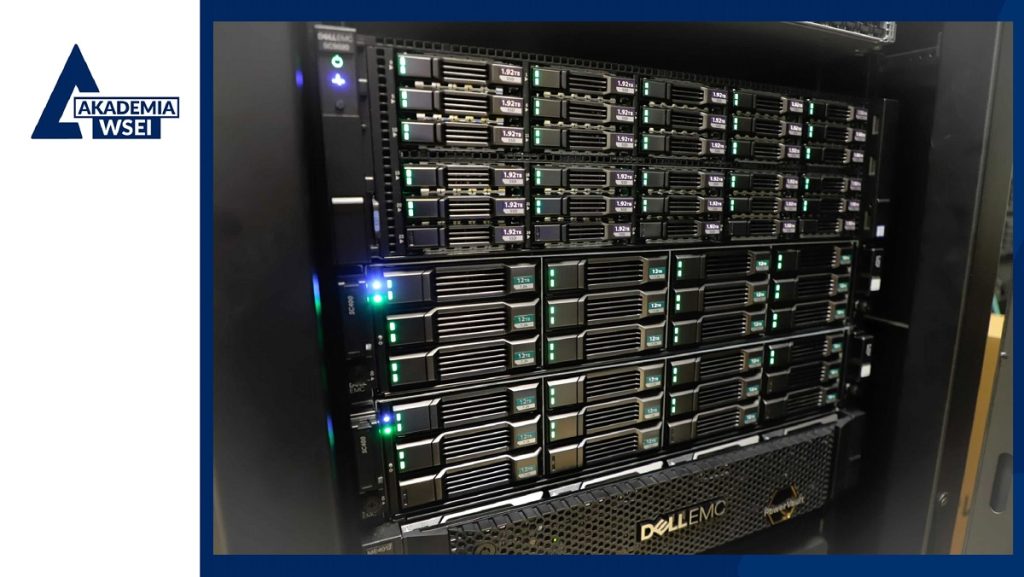
The university’s server infrastructure (Fortinet, Dell EMC) was presented, as well as how students and employees use the cloud platform (VMware Horizon), including access to virtual laboratories and specialist software (LabView, SPSS, KNIME). The advantages of using the local cloud infrastructure, which ensures flexibility and security of data processing within educational and research activities, were emphasized.

The event ended with a summary, during which the organizers thanked all speakers and participants for their active participation and valuable discussions. Attention was drawn to the growing need to integrate scientific and industrial communities around joint research and implementation projects that have the potential to actually support the development of modern technologies. The workshops confirmed that the WSEI Academy is becoming an important center for the exchange of knowledge and experience in the field of artificial intelligence and future technologies. The organizers announced the continuation of the event in the following years, emphasizing the importance of further interdisciplinary and international cooperation.

